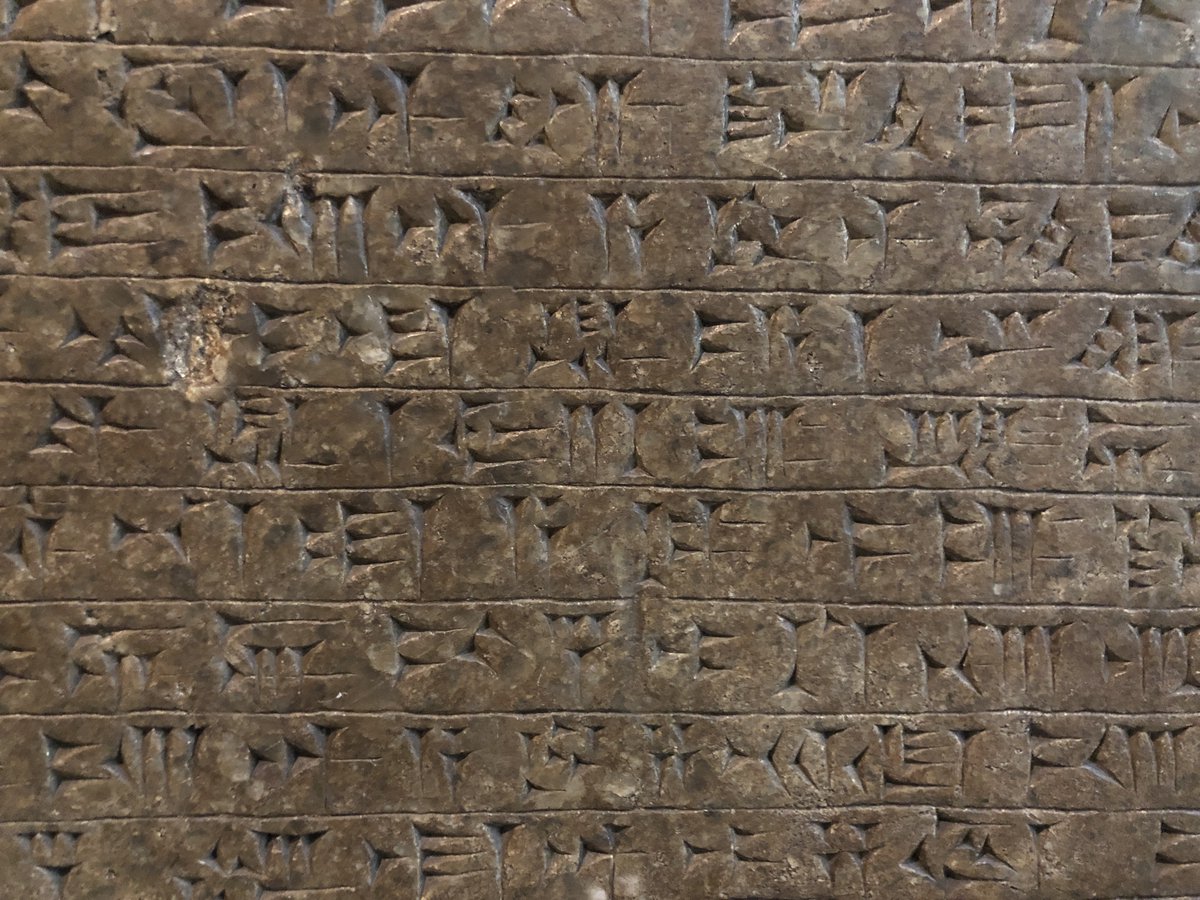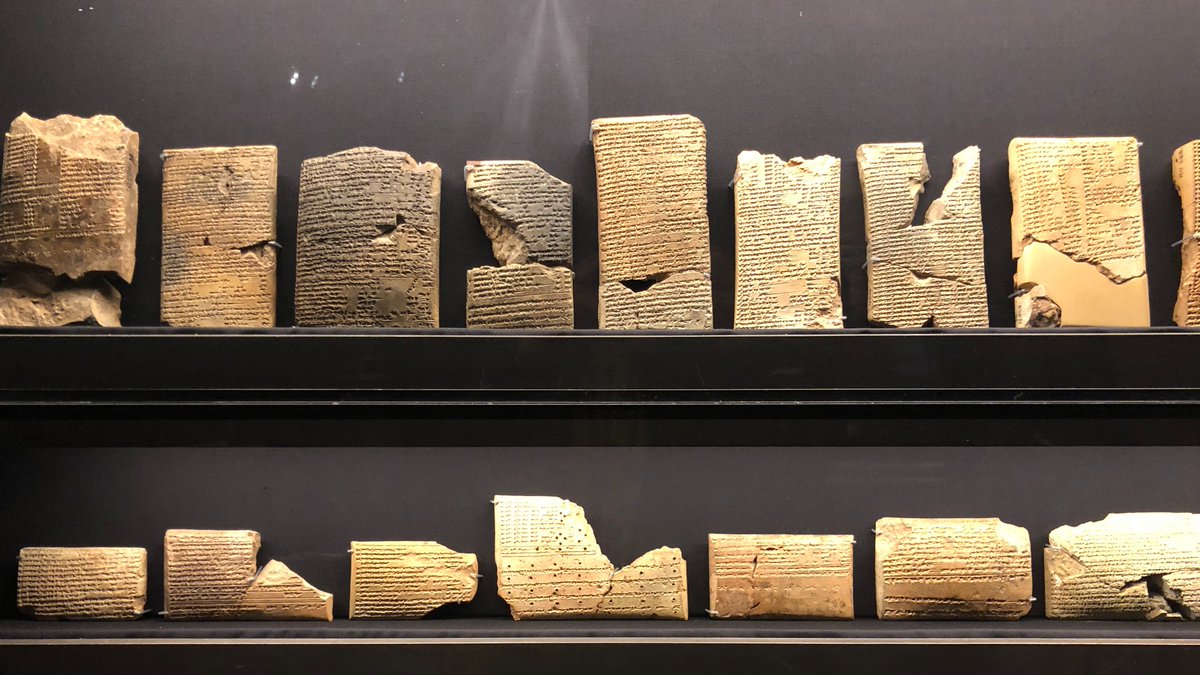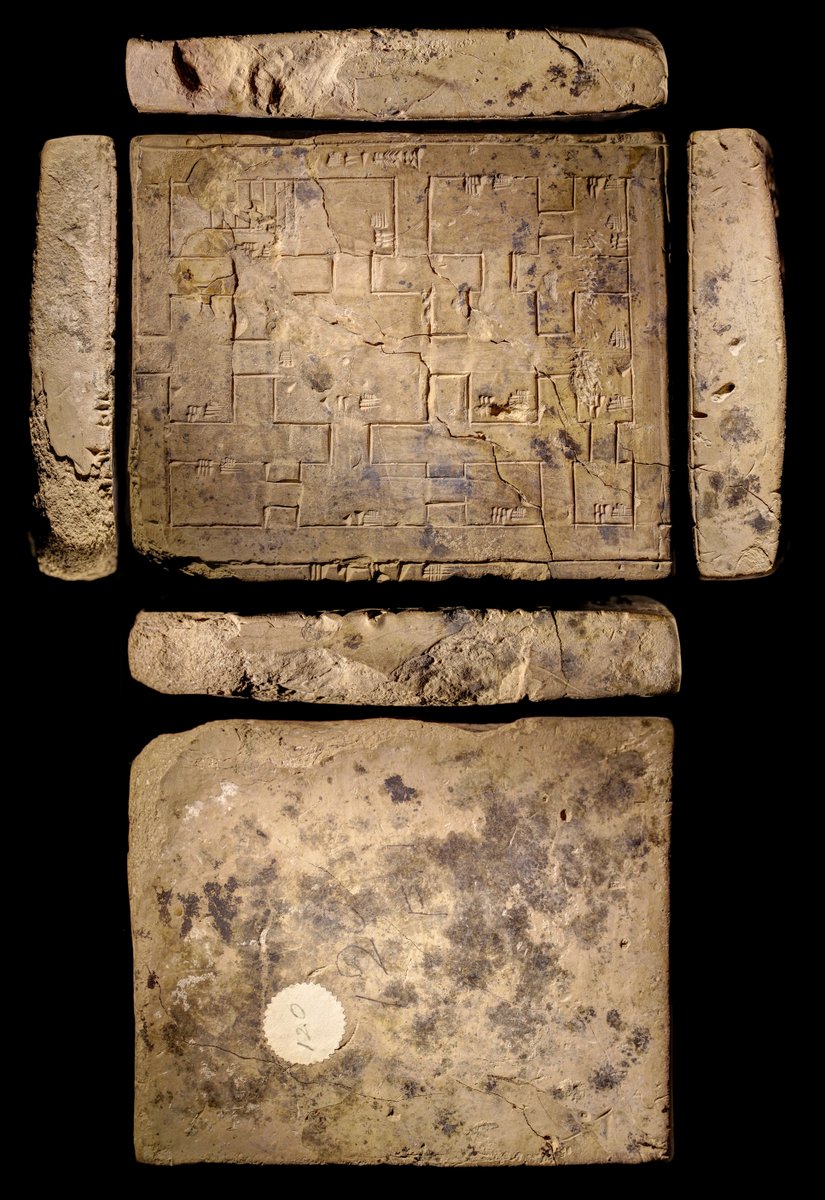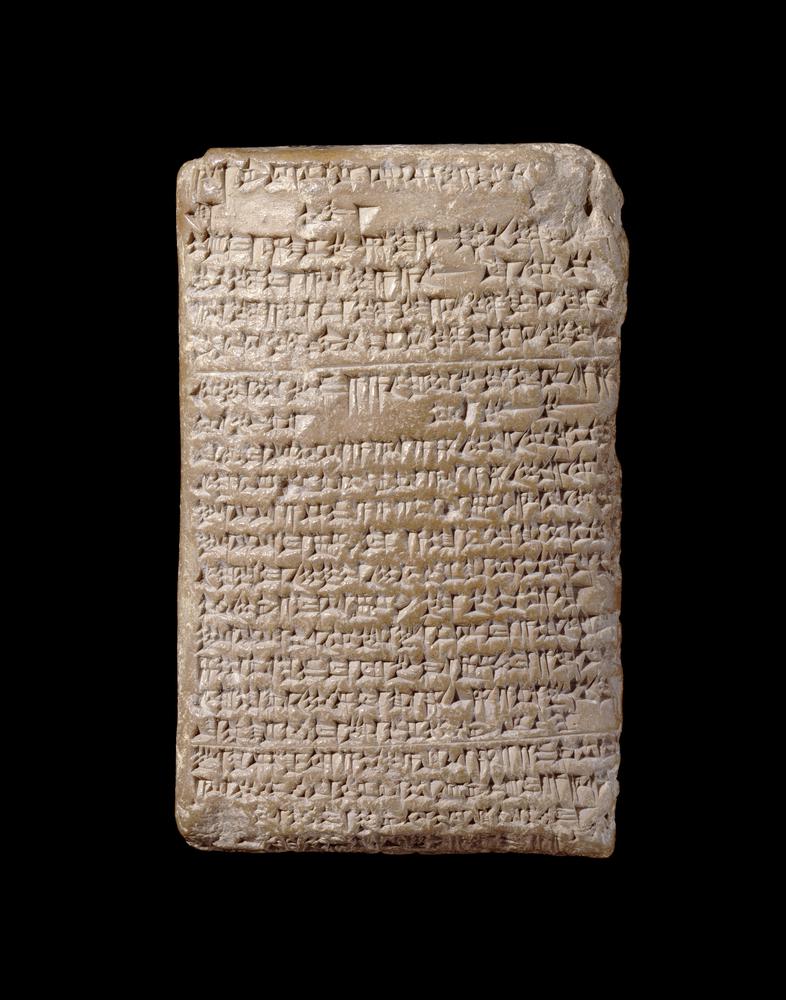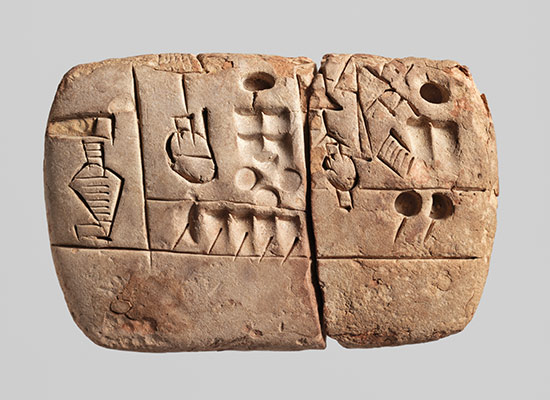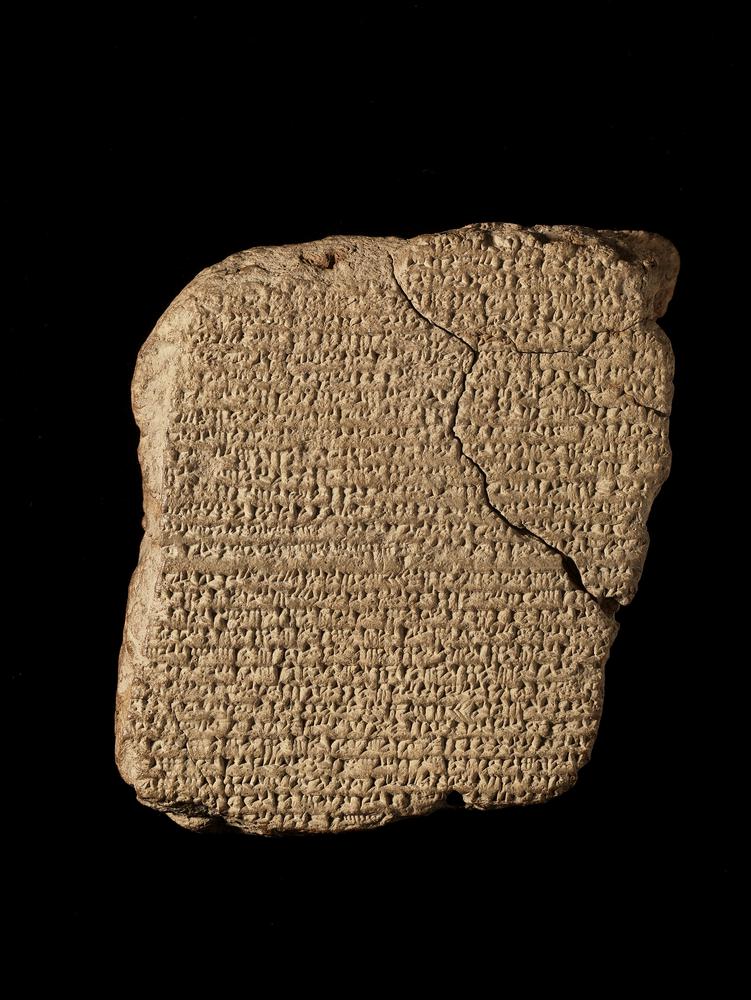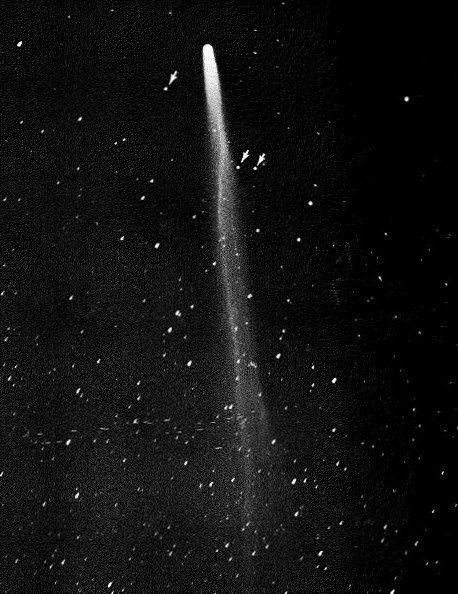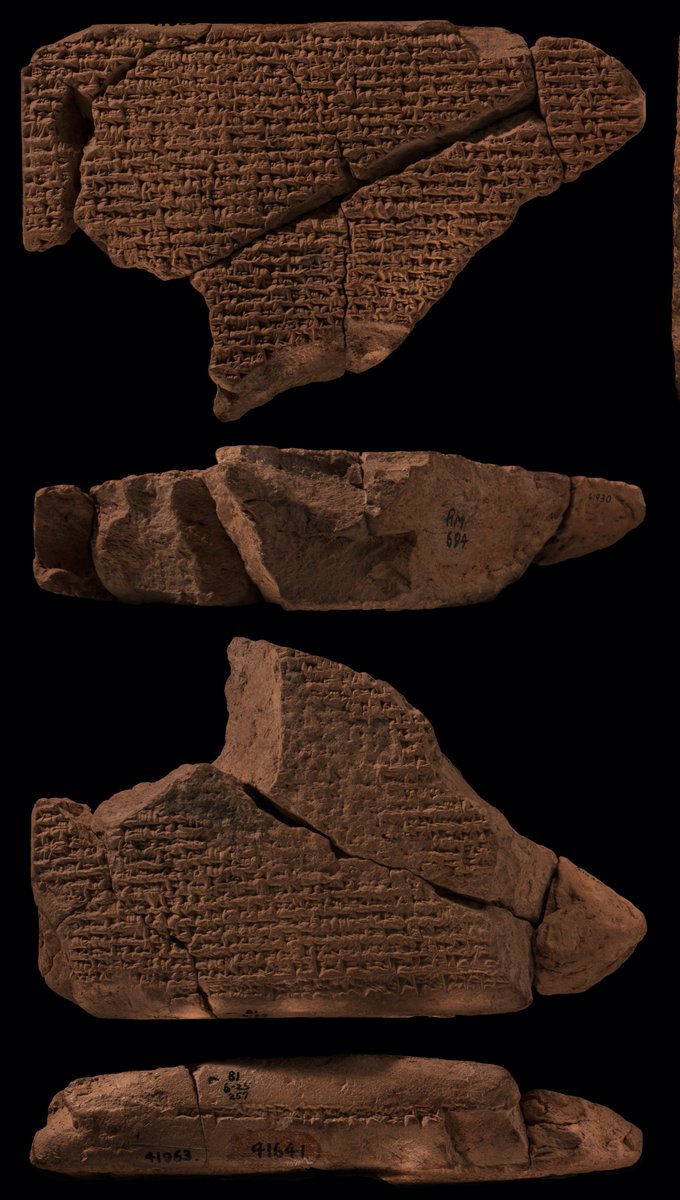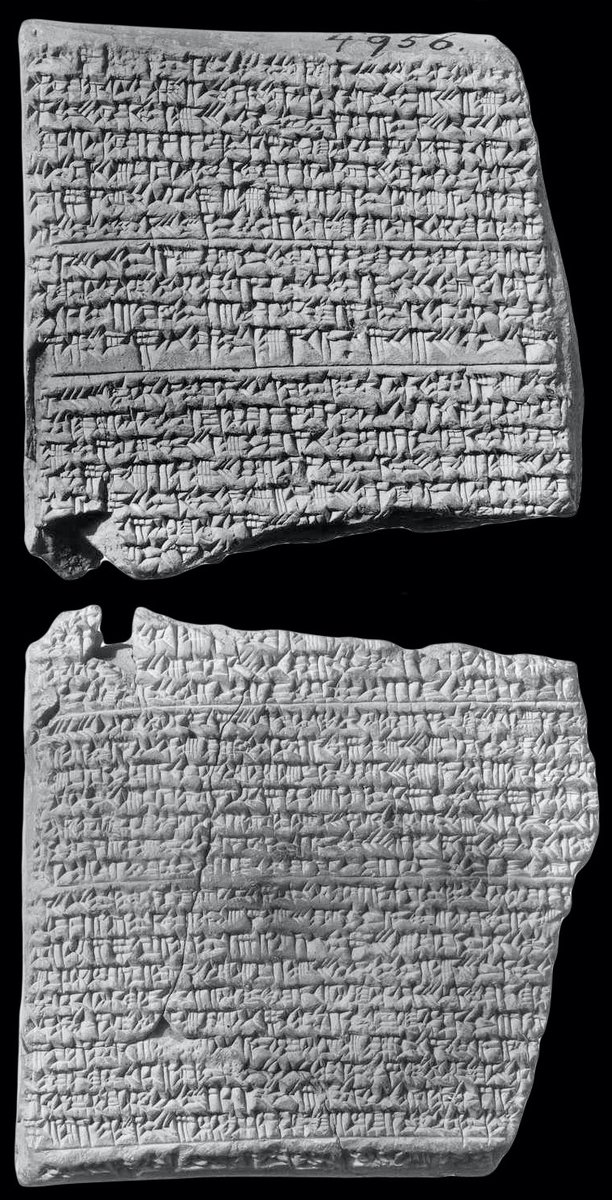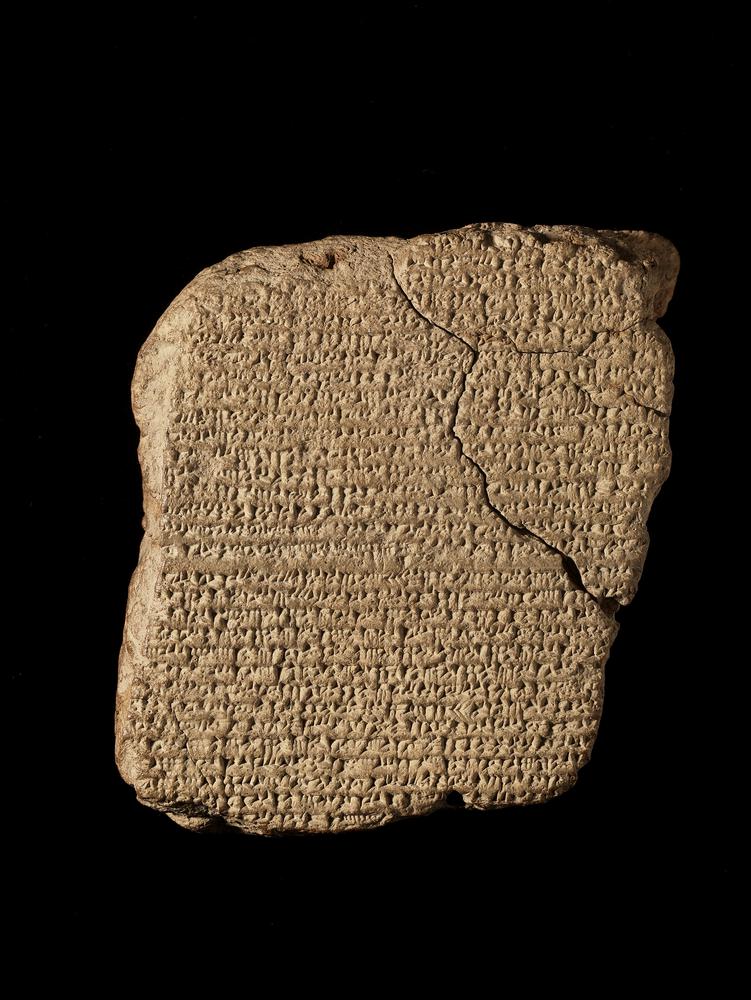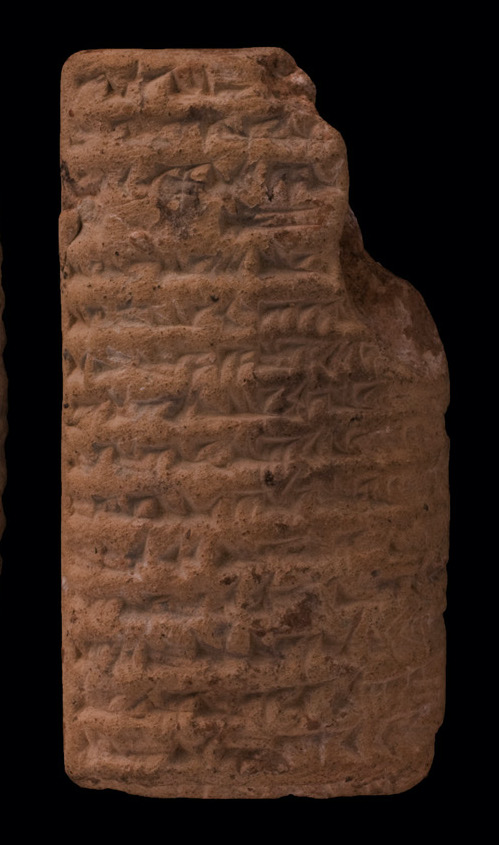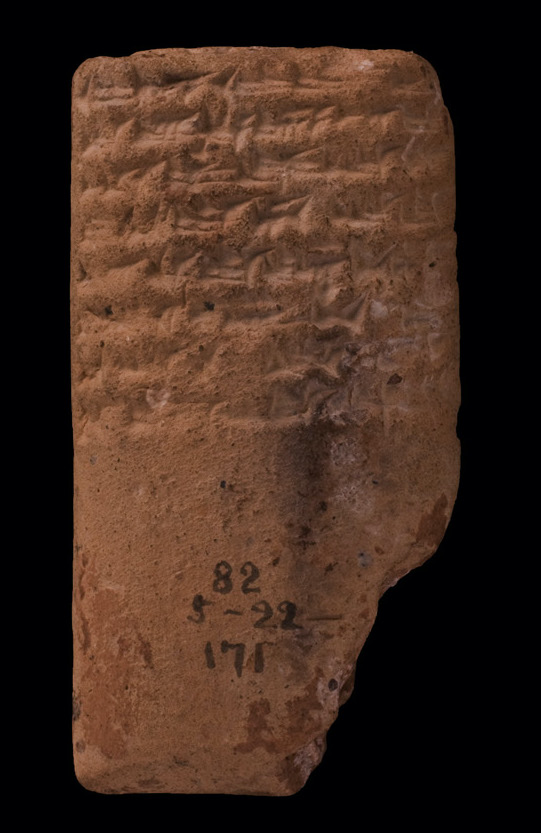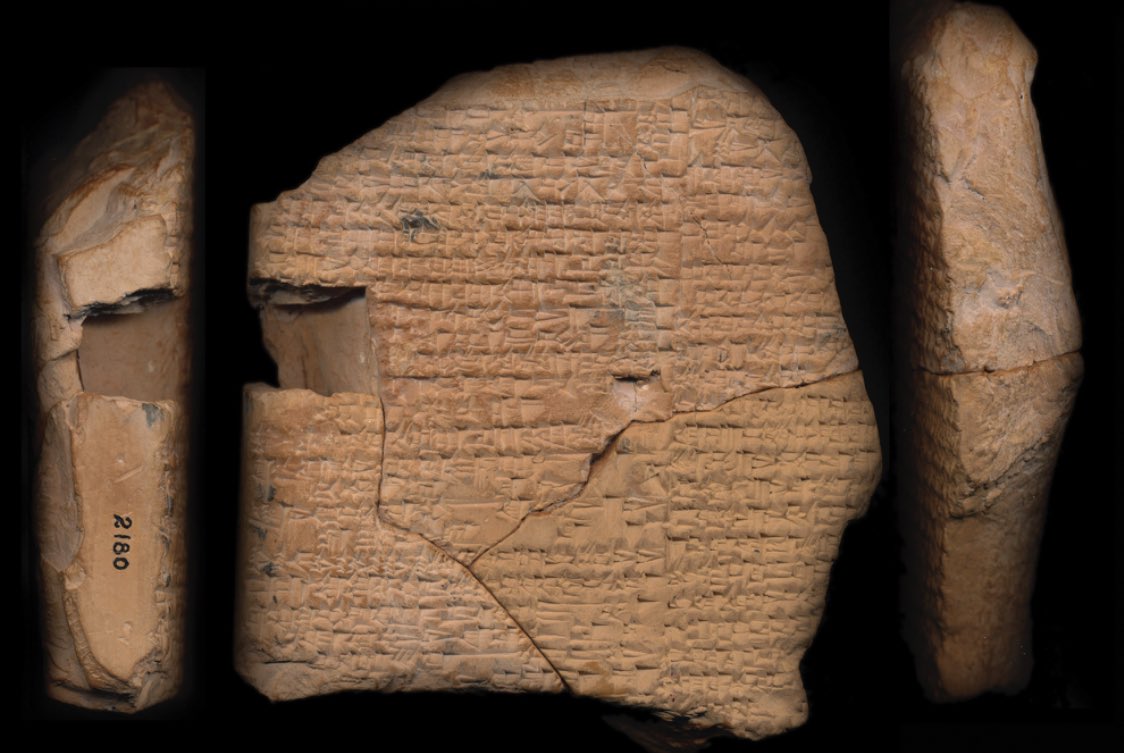
Calculation of the area of a trapezoid by a student from ancient Babylonia.
Three of the sides are labelled with numbers, and the area is written out in the centre in the sexagesimal notation system as 5,3,20 𒐊 𒁹𒁹𒁹 𒌋𒌋 (= 5 and 1/18th, I think)
Three of the sides are labelled with numbers, and the area is written out in the centre in the sexagesimal notation system as 5,3,20 𒐊 𒁹𒁹𒁹 𒌋𒌋 (= 5 and 1/18th, I think)

Possibly a Babylonian approximation of pi reflected in this drawing of a circle with inscribed numbers.
Read more about it here, including a computational explanation and further biblio history-of-mathematics.org/artifacts/baby…
Read more about it here, including a computational explanation and further biblio history-of-mathematics.org/artifacts/baby…

A school tablet with calculations of the areas of squares with the teacher’s neat copy on one side (left) and a student’s slightly messier work on the other (right). Can you spot the number 9 inside the innermost square? 𒑆
Photo by Klaus Wagensonner collections.peabody.yale.edu/search/Record/…

Photo by Klaus Wagensonner collections.peabody.yale.edu/search/Record/…


This lovely tablet that looks like it’s been folded over and has a few numerical notations.
It may have been a “scratch pad” for calculations on a separate administrative text and maybe reused as a candle holder. Dr Christine Proust has written about it academia.edu/34449978/BM_11…
It may have been a “scratch pad” for calculations on a separate administrative text and maybe reused as a candle holder. Dr Christine Proust has written about it academia.edu/34449978/BM_11…

I have like 2,000 emails to reply to and am procrastinating
“Problem: an excavation. The depth is as much as I squared and 7 cubits. I removed 3 20, the volume. What are the length, width, and depth?”
Excerpt of a ~4,000-year-old compilation of mathematical word problems from ancient Sippar oracc.iaas.upenn.edu/dccmt/P254440/…

Excerpt of a ~4,000-year-old compilation of mathematical word problems from ancient Sippar oracc.iaas.upenn.edu/dccmt/P254440/…


You know when you have so much to do and you don’t know where to start so you do a thread on Babylonian mathematics instead
A round tablet from the Sargonic period (c2350-2250 BCE) that shows a diagram of a bisected trapezoid, probably a school assignment. The area calculated is 1 “sar”, a surface unit (= 36m²)
You can read more about it here cdli.ucla.edu/pubs/cdlj/2009…

You can read more about it here cdli.ucla.edu/pubs/cdlj/2009…


For those interested, you can peruse more mathematical texts from ancient Mesopotamia here via @Oracctivity @opencuneiform oracc.museum.upenn.edu/dccmt/index.ht… 

• • •
Missing some Tweet in this thread? You can try to
force a refresh

